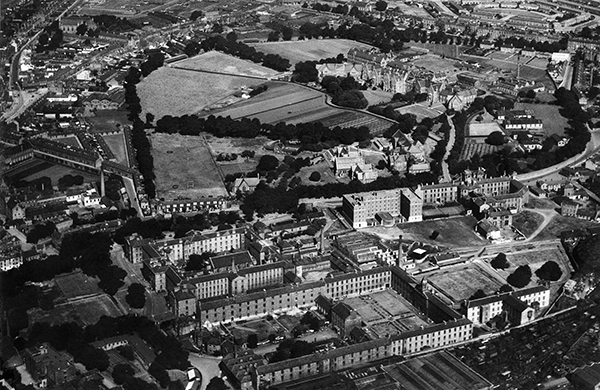Grangegorman Histories: honouring the past
Published in Issue 5 (September/October 2020), News, Volume 28A project designed to ensure that the history of the site is not forgotten.
Grangegorman Histories is a public history project with the aim of uncovering, cataloguing and commemorating the eventful history of the Grangegorman area, situated between Phibsborough and Stoneybatter on Dublin’s north side.
In 1773 the Dublin House of Industry was built in the south-east quarter of the site (roughly where the Legion of Mary hostel now stands). The House of Industry was an institution for the relief of the poor in the county of Dublin. It became the county workhouse and included sections used as asylums for the ‘aged, infirm, homeless children’ and others.
The Richmond Lunatic Asylum (now the ‘Lower House’) was one of the first public psychiatric hospitals in Ireland, built immediately to the west of the workhouse, and opened in 1814. It was named after the duke of Richmond, lord lieutenant of Ireland. The asylum catered for patients whose mental illnesses were considered treatable and, in the early years, a high quality of accommodation and environment was maintained. By the 1820s, however, changes in legislation led to overcrowding and to the reception of patients deemed by the courts of the time to be ‘criminally insane’.
The Richmond Penitentiary (now the ‘Clock Tower’) was constructed in 1820, immediately to the north of the asylum. The building held both male and female offenders and was the first prison in Ireland to emphasise reform and ‘moral management’ of prisoners rather than punishment. In 1832 it was taken over for an extended period as a cholera hospital.
In 1836 the penitentiary became the Grangegorman Female Penitentiary, the first exclusively female prison in Britain and Ireland. This was used as the Grangegorman Transportation Depot between 1840 and the 1880s, when over 3,200 women and children were held there on their way to Van Diemen’s Land (now Tasmania). In the 1860s the penitentiary was extended and improved. It was again taken over for hospital use in 1897 during typhoid and beriberi outbreaks and was never returned to prison use. The last patients were removed in the 1930s and the buildings mostly demolished over the next few decades.

Above: An aerial view (from east to west) of the Grangegorman site in the 1950s. The ‘fork’ of Aughrim Street and Prussia Street is in the top left-hand corner, while the North Circular Road is at the top right.
By 1836 the lands to the west of Grangegorman Lane were in use as recreational gardens for the patients in the asylum. From 1851 access was by a tunnel under the road to connect the two sites. Around 1851 a chapel, initially serving both Catholic and Protestant patients, and two infirmaries were built on those lands to the west. Following this, the new Richmond District Lunatic Asylum, which housed males only, was built in the centre of the grounds. The Church of Ireland chapel was built nearby in 1860.
The single-storey brick laundry building (now part of the HSE Primary Care Centre) was built in 1894, and the mortuary building of similar style was built around the same time. St Dympna’s (now known as Conolly Norman House) was built in 1905 on land fronting onto the North Circular Road. Three detached doctors’ houses were built in the same location c. 1936. In 1938 the Nurses’ Home was completed immediately south of the penitentiary; it was extended in 1949. Further institutional buildings were developed in the twentieth century and the complex was renamed St Brendan’s Hospital in 1958. The Nurses’ Home and other buildings were demolished in 2013; eleven protected structures remain, including the boundary wall itself.
The population of the site rose from c. 283 patients in the 1850s to c. 2,000 patients by the 1940s. The development of community-based alternatives resulted in a decline in numbers; by 2013 there were only c. 100 remaining. That year, the patients moved to the new Phoenix Care Centre and the rest of the site ceased to function as a hospital.
For generations Grangegorman was synonymous with the confinement of vulnerable people in a variety of institutions. Now it is being fully integrated into the city as a health and education campus, with access for the local community in a way that is sensitive to the context of the site. This project will ensure that the history of the site is not forgotten.
Further information @ grangegormanhistories@ggda.ie and www.grangegormanhistories.ie.
















